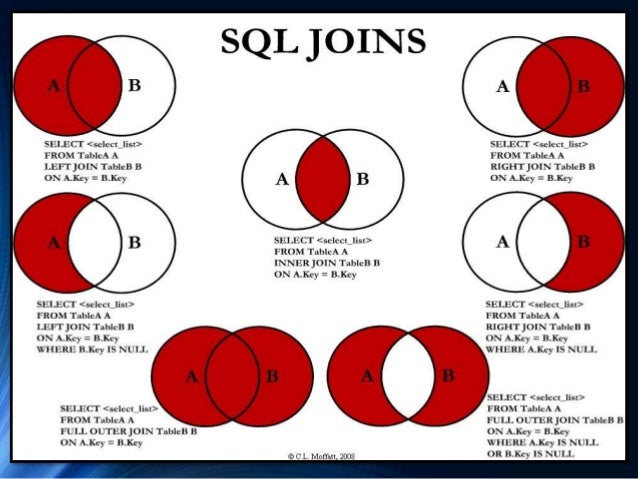Because when UNION operator combines the sorted result sets from each query, it does not guarantee the order of rows in the final result set. To use UNION , each SELECT must have the same number of columns selecte the same number of column expressions, the same data type, and have them in the same order but they do not have to be the same length. The full outer join or full join produces a result set that contains all rows from both the left and right tables, with the matching rows from both sides where available. PostgreSQL full outer join.

If there is no match, the missing side contains null values. In case of LEFT OUTER JOIN , an inner join is performed first. Then, for each row in table Tthat does not satisfy the join condition with any row in table T a joined row is added with null values in columns of T2. UNION effectively appends the result of queryto the result of query(although there is no guarantee that this is the order in which the rows are actually returned).
Furthermore, it eliminates duplicate rows from its result, in the same way as DISTINCT , unless UNION ALL is used. Below is my two suggestions, but other approaches are welcome. What is the difference between JOIN and. A in the FROM clause. Thir you specify the table that the main table joins to i. B in the INNER JOIN clause.

Joins Between Tables. Thus far, our queries have only accessed one table at a time. Queries can access multiple tables at once, or access the same table in such a way that multiple rows of the table are being processed at the same time. A query that accesses multiple rows of the same or different tables at one time is called a join query.
Set operators combine the of two component queries into a single result. Queries containing set operators are called compound queries. Therefore, UNION ALL would be the better choice in that scenario. Let’s go over noteworthy points concerning UNION. As previously note the overall gist of a UNION, combine the returned rows of the query from each individual SELECT statement.

Also, all UNION queries must have the same number of SELECT columns named in each query. So, aside from being ugly, this fails to meet the SQLspec (nothing about parens there). This is another case where a one-token lookahead between.
Deshalb werden bei diesem join jeweils alle Zeilen der linken Tabelle mit den jeweiligen Zeilen der rechten Tabelle zusammengeführt. Diese kann bei großen Ausgangstabellen sehr schnell. Different from the other JOIN operators such as LEFT JOIN or INNER JOIN , the CROSS JOIN does not have any matching condition in the join clause. If you also need data from the more specific tables you can use LEFT JOINs to also select that data in the same query. Each INNER JOIN here may be significantly faster than the whole of the LEFT JOIN based query, due to potentially being able to use indexes on followings(user_i followable_type) and favorites(user_i favorable_type).
Just do a LEFT JOIN instead: SELECT P. FROM product_groups P LEFT JOIN product_groups GP ON P. That will return all rows from P and any non-matching rows in GP will have NULL values.
Keine Kommentare:
Kommentar veröffentlichen
Hinweis: Nur ein Mitglied dieses Blogs kann Kommentare posten.